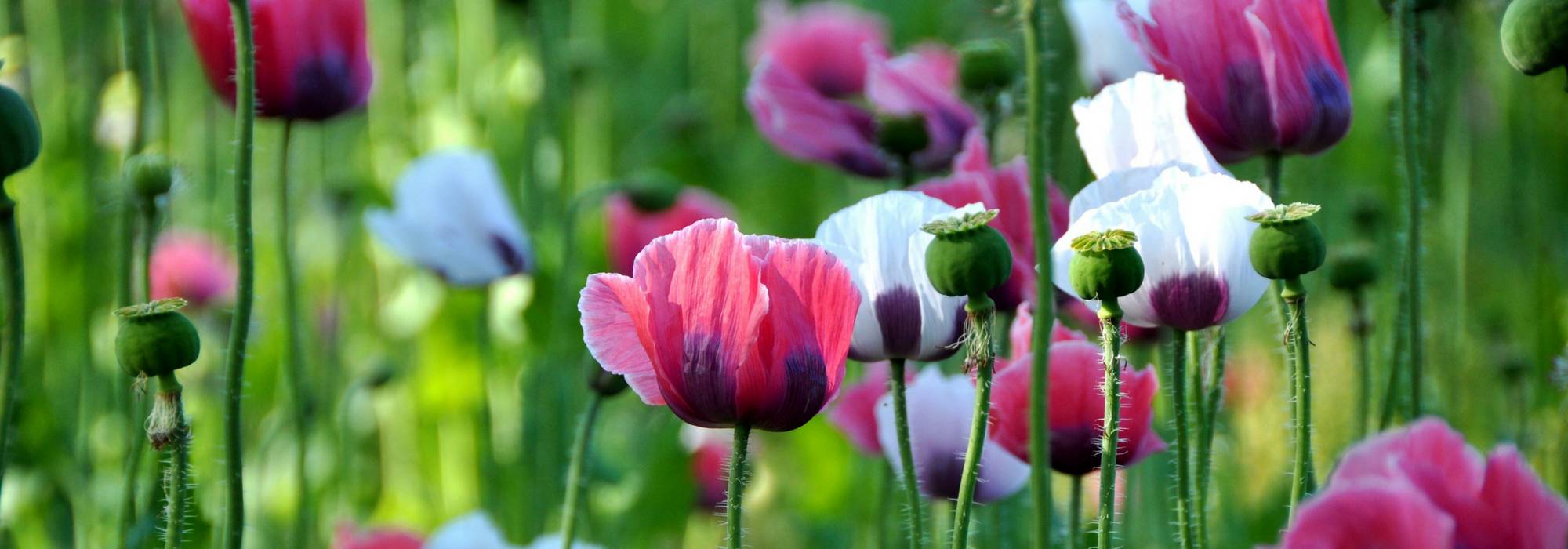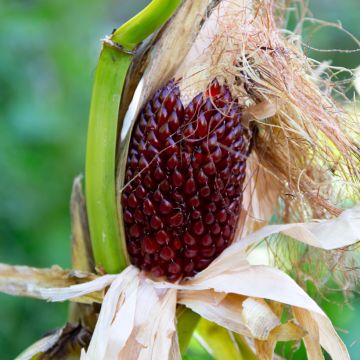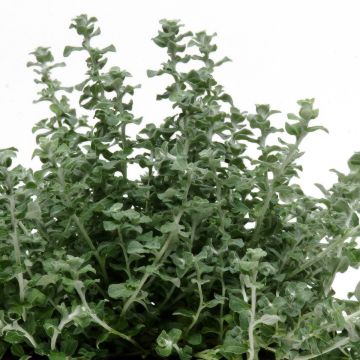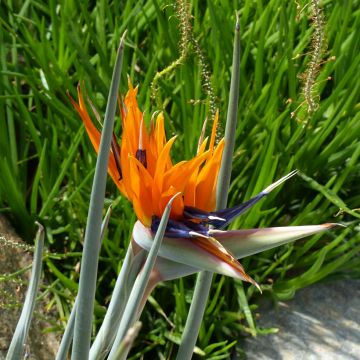

Papaver somniferum nigrum - Poppy Seeds


Graines de Pavot - Papaver somniferum nigrum


Papaver somniferum nigrum - Poppy Seeds


Papaver somniferum nigrum - Poppy Seeds
Papaver somniferum nigrum - Poppy Seeds
Papaver somniferum nigrum
Opium Poppy
I have always been satisfied with my orders, especially the alstroemerias I received. However, out of the five products I ordered, I only received two (tomatoes and melons). The poppy seeds, peppers, and artichokes were missing. I was asked to provide photos, but I can't photograph what doesn't exist. I hope for a response. Thank you.
lentschat.g88@orange.fr, 01/05/2025
Special offer!
Receive a €20 voucher for any order over €90 (excluding delivery costs, credit notes, and plastic-free options)!
1- Add your favorite plants to your cart.
2- Once you have reached €90, confirm your order (you can even choose the delivery date!).
3- As soon as your order is shipped, you will receive an email containing your voucher code, valid for 3 months (90 days).
Your voucher is unique and can only be used once, for any order with a minimum value of €20, excluding delivery costs.
Can be combined with other current offers, non-divisible and non-refundable.
Home or relay delivery (depending on size and destination)
Schedule delivery date,
and select date in basket
This plant carries a 6 months recovery warranty
More information
We guarantee the quality of our plants for a full growing cycle, and will replace at our expense any plant that fails to recover under normal climatic and planting conditions.
Description
Papaver somniferum var. nigrum, the black or opium poppy, is a beautiful annual. In summer it rises above ornamental silver-green foliage, with charming purple flowers marked with violet in the centre. Measuring 6 to 7 cm (2 to 3in) wide, they are perched on tall and sturdy stems. It is a lovely annual that will self-seed freely in the garden, giving it a romantic meadow-like feel. The dried seed capsules make beautiful bouquets, since the fresh flowers fade quickly once cut.
This natural variety of opium poppy belongs to the Papaveraceae family. The plant develops long leafy stems that reach up to 1m (3ft) or more in height when in bloom. The slightly thick foliage has silver reflections that enhance the flowering. The poppy is purple with a very dark centre. At the end of flowering, beautiful capsules appear, characteristic of opium poppies. Very decorative in the garden or as dried bouquets, they are filled with small black seeds that take on slate blue reflections when dried. These edible seeds are used in pastry, bakery, and also to make opium poppy oil, rich in vitamin E, which can be used, depending on the pressing method, to season raw vegetables or for oil painting!
This annual poppy, easy to sow and cultivate, looks stunning when planted in large numbers along pathways, in flowerbeds, or in the borders of the vegetable garden. It thrives in relatively poor, light soils and prefers sunny locations. Like all opium poppies, the Papaver somniferum var. nigrum has a tap root that does not tolerate transplantation well, which is why it is preferable to sow them in place. Poppy seeds should be preferably harvested in dry weather. Do not rush, and wait for the seeds to be fully ripe before simply shaking the capsules over a bowl. Poppy seeds can be stored in a bag or jar when free from moisture. Once established, the opium poppy will self-seed spontaneously. Feel free to leave the dried capsules in place in the garden, as they are also very aesthetic.
Did you know?
Do not confuse this poppy with its white cousin, Papaver somniferum album, the better known Opium Poppy. It is differentiated by the colour of its seeds (white) but also by its stupefying characteristics! In many countries, its cultivation is regulated and reserved for the pharmaceutical industry, for the production of morphine.
Papaver somniferum nigrum - Poppy Seeds in pictures






Harvest
Plant habit
Foliage
Botanical data
Papaver
somniferum
nigrum
Papaveraceae
Opium Poppy
Cultivar or hybrid
Annual
Planting and care
Sow the seeds of the opium poppy directly outdoors in spring or autumn. Choose a sunny, well-drained spot that has been well-prepared beforehand. Sow the fine seeds just below the surface of the soil, mixing them with sand or special seed compost to allow for less dense sowing. Water regularly, especially during dry periods. Germination usually takes 15 to 20 days at 15-20°C (59-68°F). When the young poppy plants are large enough to handle, thin out to 30 cm (12in) apart.
Garden poppies should not lack water or nutrients in summer. They self-seed easily in the garden. Remove faded flowers if you want to avoid spontaneous seeding. While they prefer light and loamy soils, annual poppies are undemanding plants that can adapt to most well-worked soils. Their seeds retain their viability for a long time, and it is not uncommon to see seedlings emerge years after a failed sowing, following soil disturbance.
Seedlings
Care
Intended location
Planting & care advice
-
, onOrder confirmed
Reply from on Promesse de fleurs
Similar products
Haven't found what you were looking for?
Hardiness is the lowest winter temperature a plant can endure without suffering serious damage or even dying. However, hardiness is affected by location (a sheltered area, such as a patio), protection (winter cover) and soil type (hardiness is improved by well-drained soil).

Photo Sharing Terms & Conditions
In order to encourage gardeners to interact and share their experiences, Promesse de fleurs offers various media enabling content to be uploaded onto its Site - in particular via the ‘Photo sharing’ module.
The User agrees to refrain from:
- Posting any content that is illegal, prejudicial, insulting, racist, inciteful to hatred, revisionist, contrary to public decency, that infringes on privacy or on the privacy rights of third parties, in particular the publicity rights of persons and goods, intellectual property rights, or the right to privacy.
- Submitting content on behalf of a third party;
- Impersonate the identity of a third party and/or publish any personal information about a third party;
In general, the User undertakes to refrain from any unethical behaviour.
All Content (in particular text, comments, files, images, photos, videos, creative works, etc.), which may be subject to property or intellectual property rights, image or other private rights, shall remain the property of the User, subject to the limited rights granted by the terms of the licence granted by Promesse de fleurs as stated below. Users are at liberty to publish or not to publish such Content on the Site, notably via the ‘Photo Sharing’ facility, and accept that this Content shall be made public and freely accessible, notably on the Internet.
Users further acknowledge, undertake to have ,and guarantee that they hold all necessary rights and permissions to publish such material on the Site, in particular with regard to the legislation in force pertaining to any privacy, property, intellectual property, image, or contractual rights, or rights of any other nature. By publishing such Content on the Site, Users acknowledge accepting full liability as publishers of the Content within the meaning of the law, and grant Promesse de fleurs, free of charge, an inclusive, worldwide licence for the said Content for the entire duration of its publication, including all reproduction, representation, up/downloading, displaying, performing, transmission, and storage rights.
Users also grant permission for their name to be linked to the Content and accept that this link may not always be made available.
By engaging in posting material, Users consent to their Content becoming automatically accessible on the Internet, in particular on other sites and/or blogs and/or web pages of the Promesse de fleurs site, including in particular social pages and the Promesse de fleurs catalogue.
Users may secure the removal of entrusted content free of charge by issuing a simple request via our contact form.
The flowering period indicated on our website applies to countries and regions located in USDA zone 8 (France, the United Kingdom, Ireland, the Netherlands, etc.)
It will vary according to where you live:
- In zones 9 to 10 (Italy, Spain, Greece, etc.), flowering will occur about 2 to 4 weeks earlier.
- In zones 6 to 7 (Germany, Poland, Slovenia, and lower mountainous regions), flowering will be delayed by 2 to 3 weeks.
- In zone 5 (Central Europe, Scandinavia), blooming will be delayed by 3 to 5 weeks.
In temperate climates, pruning of spring-flowering shrubs (forsythia, spireas, etc.) should be done just after flowering.
Pruning of summer-flowering shrubs (Indian Lilac, Perovskia, etc.) can be done in winter or spring.
In cold regions as well as with frost-sensitive plants, avoid pruning too early when severe frosts may still occur.
The planting period indicated on our website applies to countries and regions located in USDA zone 8 (France, United Kingdom, Ireland, Netherlands).
It will vary according to where you live:
- In Mediterranean zones (Marseille, Madrid, Milan, etc.), autumn and winter are the best planting periods.
- In continental zones (Strasbourg, Munich, Vienna, etc.), delay planting by 2 to 3 weeks in spring and bring it forward by 2 to 4 weeks in autumn.
- In mountainous regions (the Alps, Pyrenees, Carpathians, etc.), it is best to plant in late spring (May-June) or late summer (August-September).
The harvesting period indicated on our website applies to countries and regions in USDA zone 8 (France, England, Ireland, the Netherlands).
In colder areas (Scandinavia, Poland, Austria...) fruit and vegetable harvests are likely to be delayed by 3-4 weeks.
In warmer areas (Italy, Spain, Greece, etc.), harvesting will probably take place earlier, depending on weather conditions.
The sowing periods indicated on our website apply to countries and regions within USDA Zone 8 (France, UK, Ireland, Netherlands).
In colder areas (Scandinavia, Poland, Austria...), delay any outdoor sowing by 3-4 weeks, or sow under glass.
In warmer climes (Italy, Spain, Greece, etc.), bring outdoor sowing forward by a few weeks.


















































